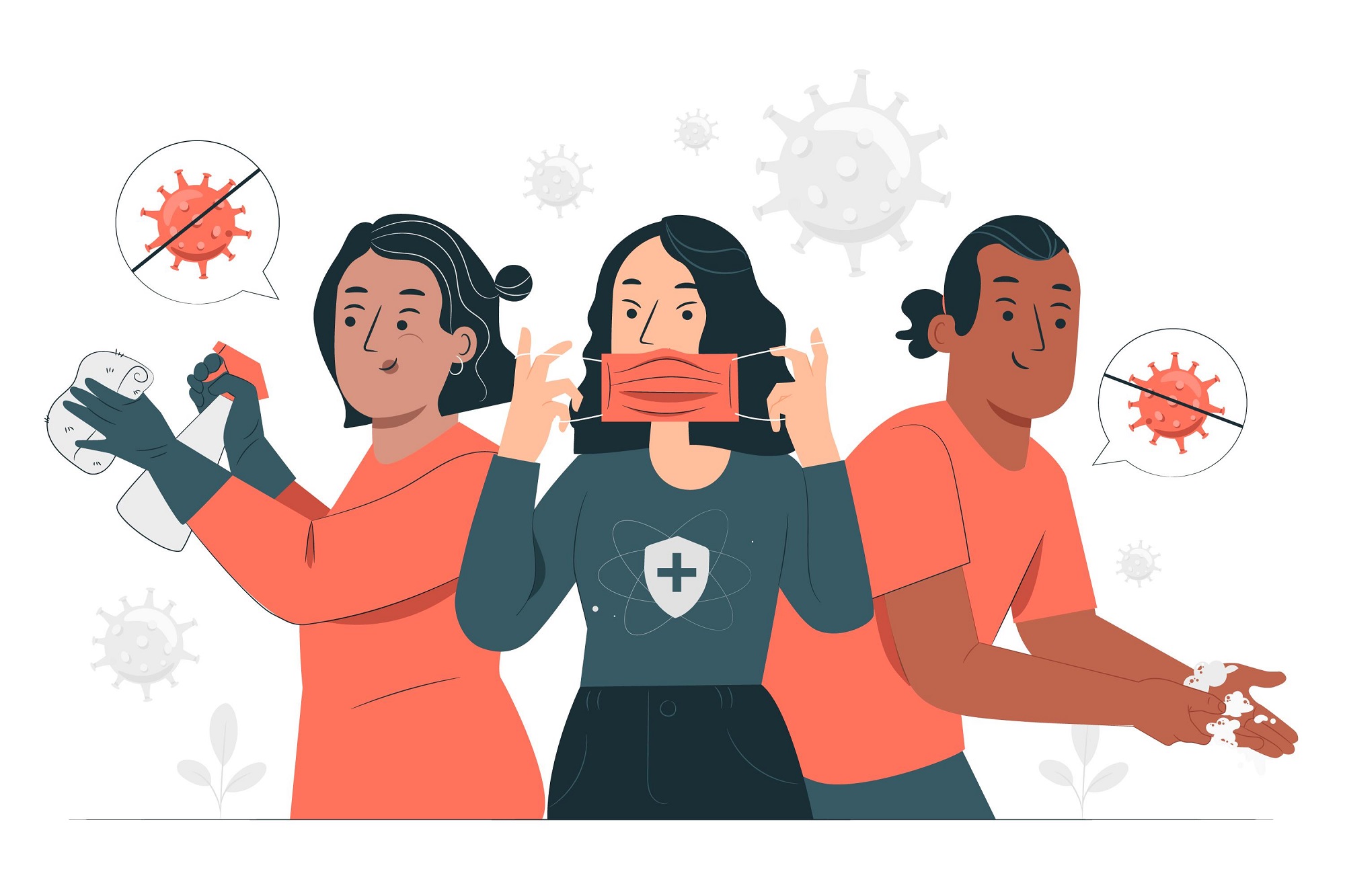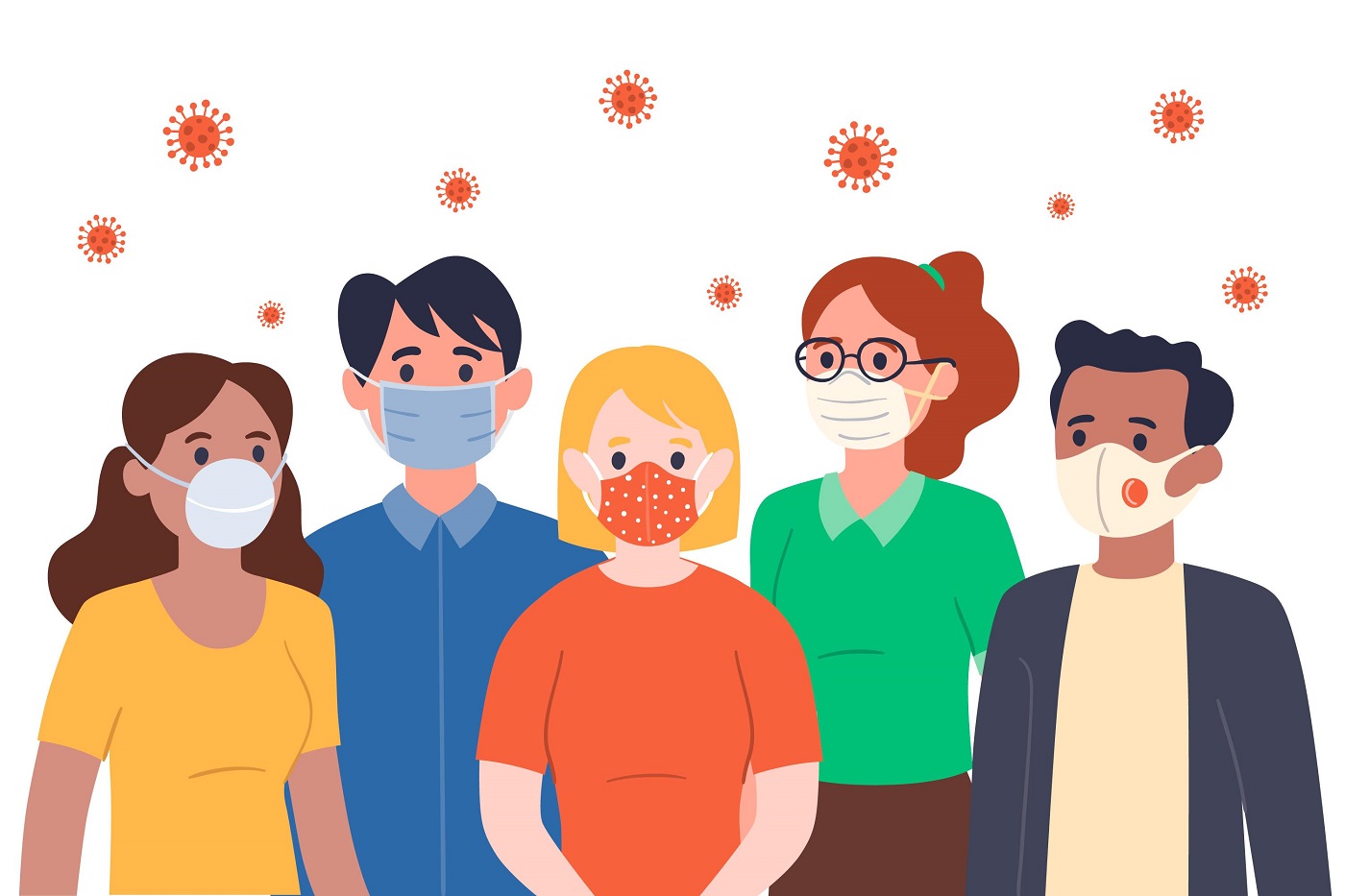
COVID Stigma: Fight Stereotypes, Create a Caring Workplace
November 26, 2020
Recovering from COVID-19 is not easy. Dealing with COVID stigma makes it even harder.
The difficulty in supporting an employee who has gotten the coronavirus is that it can seem like a mixed message: If someone is feeling or showing even mild symptoms, it is wise to send them home, of course. That caution, though, repeated over the course of almost a full year, can help create a rather unwelcoming environment. And it’s increasingly common.
If you haven’t felt it yet, here’s a taste of COVID stigma: “Think of the last time you coughed at the grocery store,” says one cited professor. Even with a mask on, she says, ‘you probably got side-eye and dirty looks.’”
The National Institutes of Health (NIH) report that stigma associated with COVID-19 “poses a serious threat to the lives of healthcare workers, patients, and survivors of the disease.”
“Reports… include discrimination related to gender and gender-based violence, targeting of key populations, …and arrests and beatings.”
Such behavior should be unacceptable, but that’s the nature of stigmas. Where there should be empathy, there is fear, lack of understanding, and a missed opportunity to support our colleagues.
Stigmas affect people experiencing non-ideal situations and compound them by adding a stressful interpersonal effect. But it is not only emotionally devastating for someone who has had COVID to feel stigmatized; it has insidious repercussions on a much larger scale. On a social level, it damages the social fabric that holds groups together; on the community, national, and global levels, it undermines efforts to resolve a pandemic.

Individuals, community leaders, and businesses can be powerful participants in preventing and mitigating the stigma associated with COVID-19. It starts with knowing stigmatizing behavior when you see it.
What is Stigma?
A stigma is a set of frequently unfair social consequences that attaches to persons or groups, usually for prejudicial reasons. It can look like:
- Labeling
- Stereotyping
- Bullying
- Prejudgment/prejudice
- Discrimination
And, specifically related to COVID, you may have seen these specific types of stigma:
- Towards a group from an unfamiliar place or speaking an unfamiliar language.
- Social shunning or exclusion of a particular person or group.
- Stigma aimed at someone based on where they live. For example, evicting healthcare workers from their residence based on a misperception that “all healthcare workers are infectious.”
- Stigma aimed at an entire group, such as a family, a religious community, or a group with similar skin color.
- Stigma aimed at one’s own family members and close friends, which can estrange and fracture family and friend relationships.
Consequences of Stigma
Again, a stigmatized population doesn’t suffer just by “feeling bad.” There are real-life consequences that can affect everything from the denial of job and educational opportunities to verbal, emotional, and physical abuse. Other stigmatizing effects include unequal treatment and denial of access to adequate housing or health care. If any of these happen in the workplace, it not only undermines the reputation of your company, but also opens you up to discrimination action.
And it’s not just the obvious effects that we should worry about:
- COVID stigma can also prevent us from finding a solution—research from past epidemics shows stigma undermines efforts to test for, treat, and root out the disease, which is how it affects so many people on so many levels.
- Stigmas prevent afflicted people from taking necessary action. Often, others’ attitudes are a factor in whether an infected person seeks treatment. In some cases, they will even deny having the illness, which is extremely dangerous in the case of a contagious virus.
- Stigma also affects those who deploy it. People who equate a COVID-19 diagnosis with a negative stereotype are engaging in “othering,” which creates a false sense that it’s “not normal” to get infected. Studies show that people who engage in this behavior are less likely to get tested, even if their doctor encourages it, for fear of testing positive. This same phenomenon happened during the early days of the AIDS epidemic, especially in the U.S.
Preventing and Mitigating Stigma

So, how can you fight against COVID stigma? Awareness is a start. Knowing what stigmatizing behavior looks like, understanding its consequences, and truly caring for the people it affects, is what needs to happen next. As leaders—whether it’s in our own families, our groups of friends, our offices, our businesses, or our communities—the choice is ours: We can spread fear, or we can spread reassurance and connection.
What Individuals Can Do
It doesn’t take years of experience in mental health to help fight COVID-19 stigma. It only requires some effort for us to be kind. If you’re an employer, you should take some added responsibility, but all of us can:
- Trust and share reputable information about the virus and how it spreads
- Be compassionate and empathetic
- Avoid assumptions based on ethnicity, race, or nationality
- Be conscious of the language we use
- Check our own biases
- Discuss the harm of stigma openly
- Avoid stigmatizing those in quarantine—it’s the right thing to do!
- Normalize positivity and correct negative or false information about those infected or recovering
What Leaders Can Do
- Prepare your HR, benefits, and health support teams to address stigmas surrounding COVID
- Embrace diversity and acknowledge that COVID-19 is affecting everyone
- Choose neutral typefaces, symbols, and formats in your COVID-related messaging
- Provide or suggest resources for mental health for those who are concerned with or experiencing stigma
At the end of the day, it’s worse for the person suffering from COVID-19. That person might have a family they’re now scared for, is probably feeling isolated, and, of course, is likely feeling physical effects—the likes of which we don’t fully understand yet.
Our goal should be to support our colleagues and employees, and we can start to do that by fighting stigma.
November 26, 2020
Topics: COVID-19, Managing Employees coronavirus, covid-19, stigma, support employees

Comments are closed here.